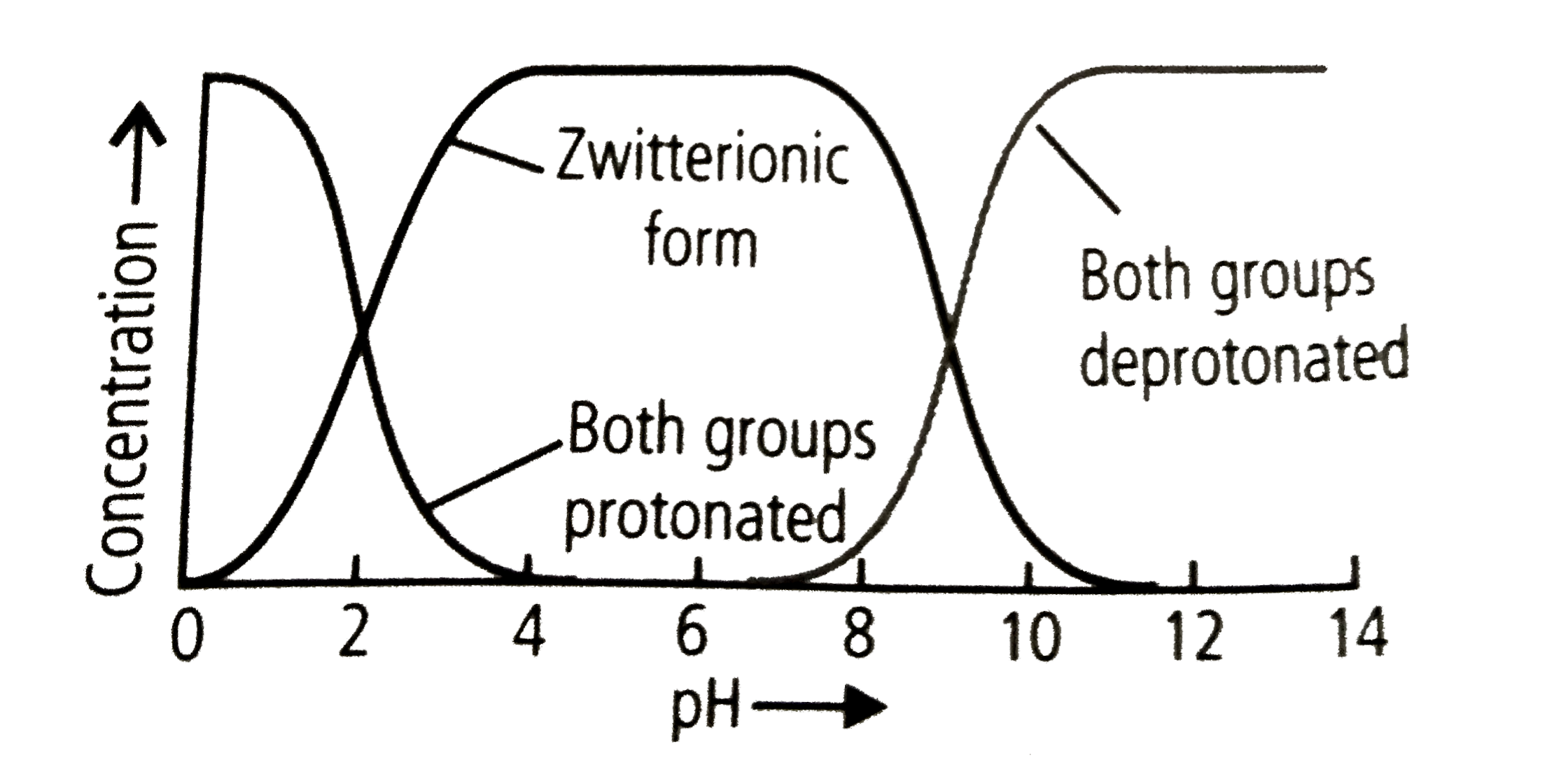Assertion : Alpha(α)− amino acids exist as internal salt in solution as they have amino and carboxylic acid groups in near vicinity.
Reason:H+ ion given by carboyxylic group (−COOH) is captured by amino group (−NH2) having lone pair of electrons.
If both assertion and reason are true and reason is the correct explanation of assertion
If both assertion and reason are true but reason is not the correct explanation of assertion
If assertion is true but reasonb is false
If both assertion and reason are false.
The correct Answer is:A
To solve the assertion and reason question regarding alpha amino acids, we will break down the statements and analyze them step by step.
Step 1: Understanding the Assertion
The assertion states that alpha-amino acids exist as internal salts in solution due to the proximity of amino (-NH2) and carboxylic acid (-COOH) groups.
Explanation:
- Alpha-amino acids have both an amino group and a carboxylic acid group attached to the same carbon atom (the alpha carbon).
- In an aqueous solution, these groups can interact with each other, leading to the formation of a zwitterion.
Hint: Consider how the structure of alpha-amino acids allows for interactions between functional groups.
Step 2: Understanding the Reason
The reason states that the H⁺ ion from the carboxylic group is captured by the amino group, which has a lone pair of electrons.
Explanation:
- The carboxylic acid group can donate a proton (H⁺), resulting in a negatively charged carboxylate ion (-COO⁻).
- The amino group, which has a lone pair of electrons, can accept this proton, becoming positively charged (-NH3⁺).
- This proton transfer leads to the formation of a zwitterion, which is a molecule with both positive and negative charges but is overall neutral.
Hint: Think about the acid-base reaction occurring between the carboxylic acid and the amino group.
Step 3: Conclusion
Both the assertion and the reason are true. The reason provided correctly explains why alpha-amino acids exist as internal salts (zwitterions) in solution.
Final Answer
- Assertion: True
- Reason: True
- Explanation: The reason is a correct explanation of the assertion.
Summary of Steps:
1. Identify the structure of alpha-amino acids and their functional groups.
2. Explain the interaction between the amino and carboxylic acid groups in solution.
3. Discuss the proton transfer process that leads to the formation of zwitterions.
4. Conclude that both statements are true and that the reason supports the assertion.
The assertion states that alpha-amino acids exist as internal salts in solution due to the proximity of amino (-NH2) and carboxylic acid (-COOH) groups.
- Alpha-amino acids have both an amino group and a carboxylic acid group attached to the same carbon atom (the alpha carbon).
- In an aqueous solution, these groups can interact with each other, leading to the formation of a zwitterion.
The reason states that the H⁺ ion from the carboxylic group is captured by the amino group, which has a lone pair of electrons.
- The carboxylic acid group can donate a proton (H⁺), resulting in a negatively charged carboxylate ion (-COO⁻).
- The amino group, which has a lone pair of electrons, can accept this proton, becoming positively charged (-NH3⁺).
- This proton transfer leads to the formation of a zwitterion, which is a molecule with both positive and negative charges but is overall neutral.
Both the assertion and the reason are true. The reason provided correctly explains why alpha-amino acids exist as internal salts (zwitterions) in solution.
- Assertion: True
- Reason: True
- Explanation: The reason is a correct explanation of the assertion.
1. Identify the structure of alpha-amino acids and their functional groups.
2. Explain the interaction between the amino and carboxylic acid groups in solution.
3. Discuss the proton transfer process that leads to the formation of zwitterions.
4. Conclude that both statements are true and that the reason supports the assertion.
Similar Questions
Knowledge Check
α-Amino acids behave as crystalline ionic solid and have high
melting point due to the presence of:A−NH2 groupB−COOH groupCboth - NH2and−COOHDNone of theseAmino acids have both an amino group and a carboxy group in their structure. Which amongst the following is an amino acid ?
AFormic acidBGlycerolCGlycolic acidDGlycineRefer to the given graph showing state of ionisation of zwitterion.
Select the correct statements regarding zwitterion.
(i) Zwitterions can be formed from compunds that contain both acid groups and basic groups in their molecules.
(ii) A zwitterion can act either as proton donor or proton acceptor.
(iii) A monoamine monocarboxylic α-amino acid is a acid at high pH as both the groups (amino and carboxyl) lose a proton.
(iv) Amino acids in solution at neutral pH exist predominantly as dipolar ions, the amino group is protonated (−NH+3) and the carboxyl group is deprotonated (−COO−).
 A(iii) and (iv)B(i), (ii), (iii) and (iv)C(i) and (ii)D(i), (ii) and (iii)
A(iii) and (iv)B(i), (ii), (iii) and (iv)C(i) and (ii)D(i), (ii) and (iii)
Amino acids have both an amino group and a carboxy group in their structure. Which amongst the following is an amino acid ?
View SolutionWhat will be the nature of existence of an amino acid (containing one amino and one carboxylic acid group) in solution of pH<pKa1?
View SolutionAssertion : Last amino acid of any proteins is known as c terminal amino acid
Reason : Last amino acid of any protein posses free COOH group
View SolutionAmino acids are classified as acidic, basic or neutral depending upon the relative number of amino and carboxyl groups in their molecule. Which of the following are acidic?
View SolutionGive reasons for the following
The mono-amino carboxylic acids have two pKa values.
View Solution
